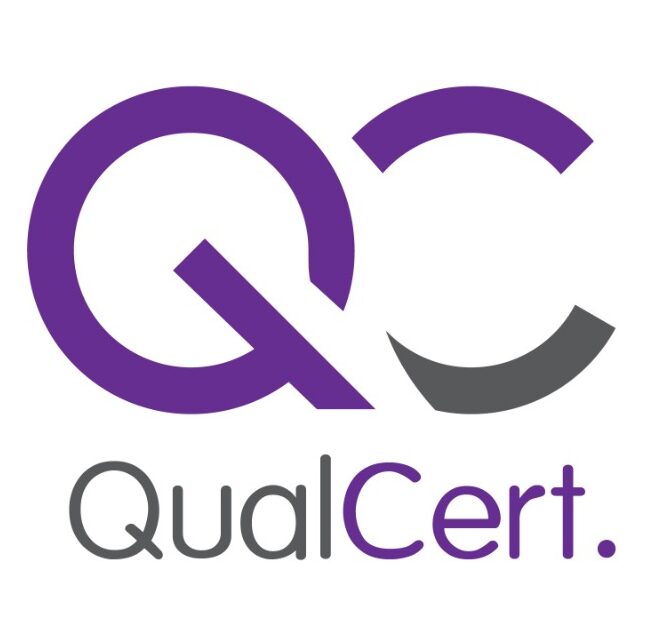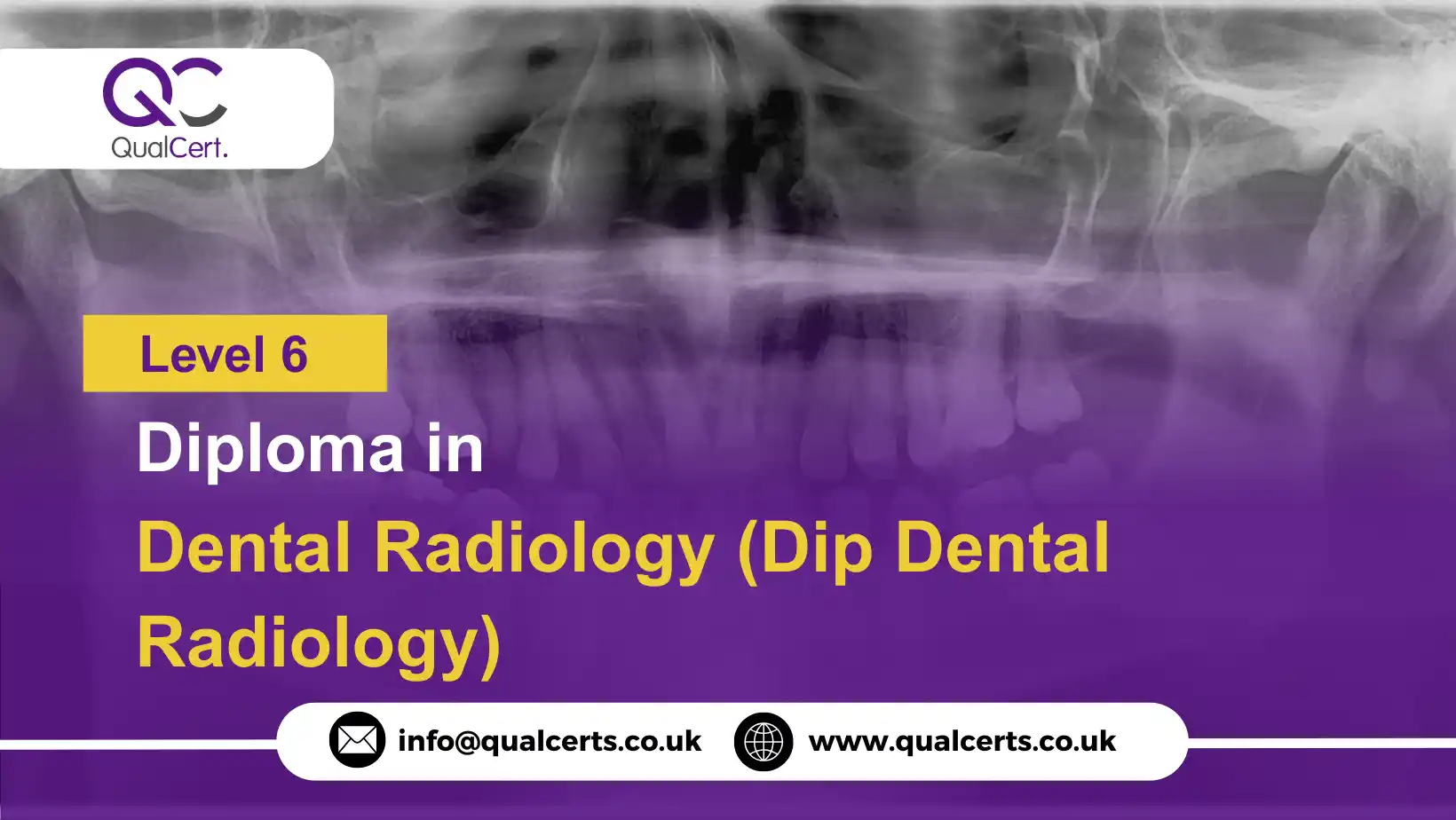The QualCert Level 6 Diploma in Dental Radiology (Dip Dental Radiology) is a specialised qualification designed for experienced dental professionals who wish to advance their knowledge and practical skills in the field of dental imaging. This diploma is not suitable for individuals at the beginning of their careers; instead, it is aimed at qualified practitioners seeking to enhance their career prospects, deepen their clinical understanding, and demonstrate their commitment to Continuing Professional Development (CPD).
Dental radiology plays a vital role in modern clinical practice, supporting accurate diagnosis, effective treatment planning, and patient safety. This course equips learners with advanced knowledge of radiographic techniques, image interpretation, radiation protection, and the safe use of diagnostic imaging equipment in dental settings. It also provides a solid foundation in regulatory compliance, quality assurance, and best practices in digital and conventional radiology.
To ensure successful delivery of this qualification, training centres must meet strict standards. Centres are required to have suitably qualified and competent staff, as well as access to the necessary radiographic equipment, materials, and learning resources. This guarantees a high standard of education and supports learners in gaining both the theoretical knowledge and practical competence required in professional dental radiology.
By completing the Level 6 Diploma in Dental Radiology, learners will be well-equipped to take on enhanced responsibilities within their practice, contribute to improved patient care, and progress confidently in their dental careers.
Course Contents of QualCert Level 6 Diploma in Dental Radiology (Dip Dental Radiology)
The QualCert Level 6 Diploma in Dental Radiology (Dip Dental Radiology) consists of a structured set of study units designed to provide learners with in-depth and comprehensive knowledge. The qualification includes a total of 1200 Total Qualification Time (TQT), 600 Guided Learning Hours (GLH), and awards 120 credits.
| Unit Ref# | Unit Title | Credits | GLH | TQT |
| QC27051 – 1 | Principles of Dental Radiology and Imaging Sciences | 20 | 100 | 200 |
| QC27051 – 2 | Radiation Physics, Protection, and Safety in Dental Practice | 20 | 100 | 200 |
| QC27051 – 3 | Intraoral and Extraoral Radiographic Techniques | 20 | 100 | 200 |
| QC27051 – 4 | Digital Imaging Technologies and Quality Assurance in Dental Radiology | 20 | 100 | 200 |
| QC27051 – 5 | Interpretation and Reporting of Dental Radiographs | 20 | 100 | 200 |
| QC27051 – 6 | Professional Practice, Ethics, and Clinical Governance in Dental Radiology | 20 | 100 | 200 |
Entry Requirements for the QualCert Level 6 Diploma in Dental Radiology (Dip Dental Radiology)
To enrol in the QualCert Level 6 Diploma in Dental Radiology, learners must meet specific entry criteria to ensure they are prepared for the academic and clinical demands of the qualification. This diploma is designed for experienced dental professionals, not for those at the beginning of their careers.
Minimum Age
- Learners must be at least 21 years of age at the time of registration.
Educational Background
- Applicants must hold a recognised dental qualification, such as a Bachelor of Dental Surgery (BDS) or equivalent.
- Current registration with a relevant professional dental regulatory body is required.
Professional Experience
- A minimum of two years of post-qualification clinical experience in dentistry is essential.
- Prior exposure to radiographic procedures or imaging within clinical settings is advantageous.
Language Proficiency
- Learners must have a good command of written and spoken English to understand course content and complete assessments.
- Non-native English speakers may be required to provide evidence of language proficiency (e.g. IELTS 6.5 or equivalent).
Commitment to Continuing Professional Development (CPD)
- Applicants must show an active interest in professional growth and lifelong learning.
- Evidence of recent or ongoing CPD activities in dentistry or radiology is highly desirable.
Access to Required Resources
- Learners must have access to:
- A clinical or educational setting equipped with dental radiographic facilities
- Supervision or mentorship from a qualified dental professional
- Radiographic equipment, such as digital sensors, intraoral and extraoral machines
- IT access for engaging with online learning materials and assessments
Learning Outcomes:QualCert Level 6 Diploma in Dental Radiology (Dip Dental Radiology)
Principles of Dental Radiology and Imaging Sciences
- Understand the fundamental concepts of dental radiology and imaging science
- Describe the interaction of X-rays with dental tissues and materials
- Identify different types of dental radiographs and their clinical uses
- Explain factors affecting image formation and quality
Radiation Physics, Protection, and Safety in Dental Practice
- Explain the principles of radiation physics relevant to dental radiology
- Understand the biological effects of ionising radiation on patients and staff
- Apply radiation protection protocols to ensure safety in dental practice
- Comply with legal and regulatory requirements related to radiation use
Intraoral and Extraoral Radiographic Techniques
- Demonstrate correct techniques for acquiring intraoral radiographs (periapical, bitewing, occlusal)
- Perform extraoral radiographic procedures including panoramic imaging
- Select appropriate exposure parameters and patient positioning
- Minimise image retakes through effective technique and patient management
Digital Imaging Technologies and Quality Assurance in Dental Radiology
- Operate digital radiography systems including sensors and software applications
- Compare digital imaging with traditional radiographic methods
- Implement quality assurance protocols to maintain image quality and equipment performance
- Manage digital image storage and patient data securely
Interpretation and Reporting of Dental Radiographs
- Recognise normal anatomical structures and common radiographic artefacts
- Identify dental pathologies such as caries, bone loss, and periapical lesions
- Produce clear, accurate radiographic reports to support clinical diagnosis
- Understand the limitations of radiographic interpretation and when to refer
Professional Practice, Ethics, and Clinical Governance in Dental Radiology
- Apply ethical principles and professional standards in radiographic practice
- Understand responsibilities regarding patient consent, confidentiality, and record-keeping
- Engage with clinical governance frameworks to maintain quality and safety
- Reflect on professional development needs and participate in continuing education
The QualCert Level 6 Diploma in Dental Radiology is designed for qualified dental professionals who wish to deepen their expertise in dental imaging and radiographic techniques. This course is ideal for practitioners seeking to enhance their clinical skills, improve diagnostic accuracy, and advance their career within dental radiology.
It is specifically suited for:
- Dentists and dental specialists aiming to expand their knowledge of dental radiology
- Dental care professionals involved in radiographic procedures who want to formalise their training
- Practitioners committed to maintaining high standards of patient safety and radiation protection
- Professionals looking to fulfil requirements for Continuing Professional Development (CPD)
- Learners with access to a clinical environment where they can apply their knowledge practically under supervision
This course is not intended for beginners or those without prior dental qualifications and clinical experience. It offers a pathway for experienced dental practitioners to gain advanced skills and knowledge, supporting improved patient care and professional growth in dental radiology.
Qualified and Experienced Staff
- Trainers and assessors must hold recognised qualifications in dental radiology
- Staff should have current clinical experience and up-to-date knowledge of radiographic practices
- Internal quality assurance personnel must be suitably qualified
Clinical Facilities and Equipment
- Access to a fully equipped dental radiology clinical environment
- Availability of both intraoral and extraoral radiographic equipment, including digital imaging systems
- Appropriate radiation protection and safety measures in place
Learning and Teaching Resources
- Comprehensive course materials, including theoretical and practical resources
- Access to digital platforms or libraries to support learner study and assessments
Supervised Clinical Practice
- Provision for learners to undertake radiographic procedures under qualified supervision
- Opportunities for learners to gain hands-on experience with radiographic equipment
Quality Assurance and Compliance
- Robust internal quality assurance systems to monitor training standards and learner progress
- Compliance with legal and regulatory requirements for radiation safety and clinical governance
Learner Support Services
- Adequate support for learners, including academic guidance and pastoral care
- Mechanisms to gather learner feedback and address any concerns promptly

